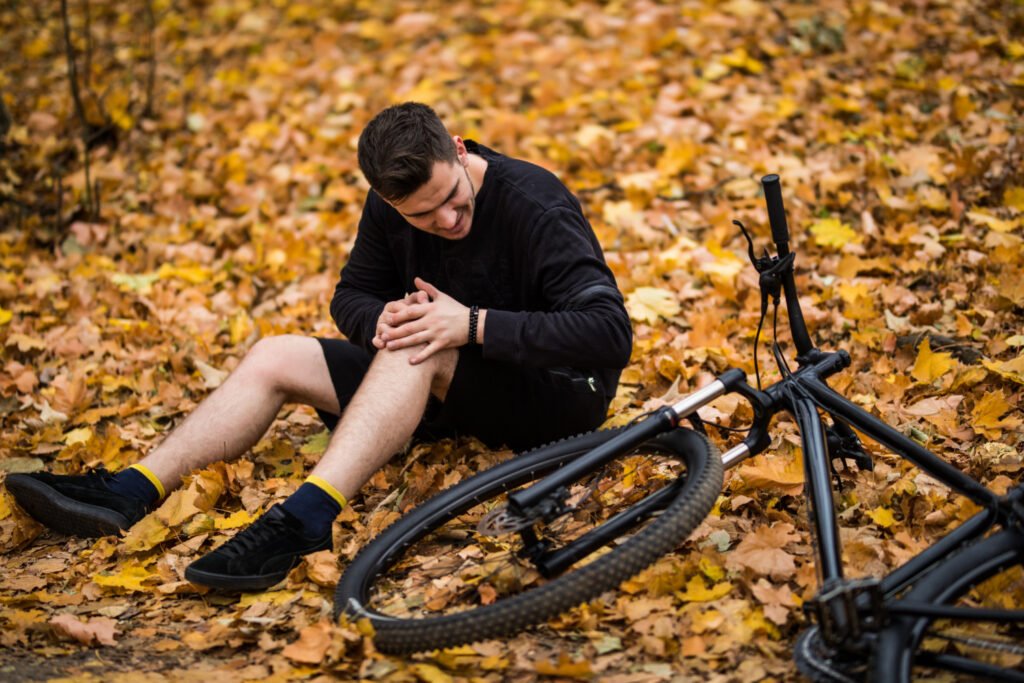The Best Fluffy Pancakes recipe you will fall in love with. Full of tips and tricks to help you make the best pancakes.
Common Road Cycling Injuries and Prevention
How to avoid overuse injuries and optimize recovery.

Even the most experienced cyclists face the reality of injuries. From aching knees to saddle sores, road cycling injuries often develop gradually from poor bike fit, repetitive motion, or overtraining. The good news? With the right prevention strategies, most cycling injuries can be avoided or managed before they become serious.
In this guide, we’ll cover the most common road cycling injuries — including knee pain, back strain, upper body discomfort, wrist numbness, and saddle issues — along with practical prevention tips every cyclist can implement. Whether you’re riding for fitness, endurance, or racing, smart injury prevention will keep you stronger in the saddle and on the road.
Knee Pain: The Most Common Road Cycling Injury
Knee pain affects up to 60% of road cyclists and represents the most frequent cycling-related injury requiring medical attention. Patellofemoral syndrome and IT band issues develop from poor bike fit, overuse, or muscle imbalances during cycling. Excessive climbing without proper conditioning creates stress on knee joints during challenging road cycling adventures. Prevention focuses on proper bike setup, gradual training progression, and targeted strength training for cycling performance.
Key knee injury prevention strategies for road cycling:
- Bike fit optimization: Proper saddle height and cleat alignment prevent cycling knee stress
- Strength training: Target glutes, hamstrings, and quads for balanced cycling muscle development
- Gradual progression: Avoid sudden increases in cycling mileage or climbing intensity
- Warm-up protocol: Always prepare knees before challenging road cycling sessions
- Recovery focus: Ice, foam rolling, and rest prevent minor cycling injuries from worsening
Smart prevention keeps cyclists pedaling pain-free through thousands of enjoyable road cycling miles.
Lower Back Pain: Addressing Postural Road Cycling Stress
Lower back pain plagues road cyclists who spend hours in aerodynamic positions without proper core strength support. Extended cycling sessions in bent-over positions stress spinal structures and supporting muscles throughout challenging rides. Weak core muscles fail to support proper cycling posture, leading to compensatory back strain and discomfort. Prevention requires core strengthening, proper bike fit adjustments, and regular stretching for cycling flexibility.
| Lower Back Issue | Cycling Cause | Prevention Strategy |
| Muscle strain | Poor posture during cycling | Core strengthening exercises |
| Spinal compression | Extended bent position | Handlebar height adjustment |
| Flexibility loss | Limited cycling movement | Regular stretching routine |
Essential lower back protection for road cycling:
- Core development: Planks, bridges, and stability exercises support cycling posture
- Bike adjustments: Proper handlebar height reduces cycling back strain
- Stretching routine: Regular flexibility work prevents cycling-related muscle tightness
- Position changes: Vary cycling positions during long rides
Proactive back care enables comfortable cycling regardless of ride duration or intensity.
Upper Body Discomfort: Neck and Shoulder Pain in Road Cycling
Neck and shoulder pain develops from prolonged head positioning required for road visibility during extended cycling sessions. Tense upper body muscles and excessive grip pressure create unnecessary cycling strain and fatigue. Poor bike reach forces cyclists into compromised positions that stress neck and shoulder structures. Prevention emphasizes relaxed cycling technique, proper bike fit, and targeted upper body strength training.
Upper body comfort strategies for road cycling:
- Relaxed technique: Avoid excessive grip tension and shoulder hunching during cycling
- Strength training: Target trapezius and upper back muscles for cycling endurance
- Bike fit check: Proper reach prevents overextension and cycling neck strain
- Position variation: Change hand positions frequently during road cycling sessions
- Recovery protocol: Heat, stretching, and mobility work after challenging cycling rides
Addressing upper body positioning transforms uncomfortable cycling into enjoyable long-distance road adventures.
Hand and Wrist Issues: Preventing Cyclist’s Palsy and Numbness
Hand numbness and wrist pain affect many road cyclists through prolonged pressure on sensitive nerve pathways. Cyclist’s palsy develops when ulnar nerves compress against handlebars during extended cycling sessions. Poor handlebar setup, inadequate padding, and static hand positions contribute to cycling-related nerve compression. Prevention requires proper equipment, frequent position changes, and awareness of pressure point management.
Hand and wrist protection for comfortable road cycling:
- Quality gloves: Padded cycling gloves reduce pressure and prevent nerve compression
- Position changes: Frequently shift hand placement during long cycling sessions
- Handlebar adjustment: Proper angle and width optimize cycling comfort and control
- Pressure awareness: Avoid excessive grip force during road cycling adventures
- Recovery exercises: Wrist stretches and nerve gliding prevent cycling-related stiffness
Smart hand care keeps cyclists connected and comfortable throughout challenging road cycling journeys.
Lower Extremity and Saddle Issues: Comprehensive Road Cycling Prevention
Achilles tendonitis and saddle sores represent common yet preventable road cycling injuries affecting lower body comfort. Overuse, improper cleat positioning, and sudden training increases stress Achilles tendons during cycling activities. Saddle-related issues develop from friction, poor fit, and inadequate hygiene during extended cycling sessions. Comprehensive prevention addresses equipment, training progression, and personal care for cycling comfort.
| Injury Type | Primary Causes | Prevention Focus |
| Achilles tendonitis | Overuse, cleat position | Gradual progression, stretching |
| Saddle sores | Friction, poor hygiene | Quality shorts, chamois cream |
Lower body injury prevention for road cycling success:
- Training progression: Gradually increase cycling mileage and intensity levels
- Equipment quality: Invest in proper cycling shorts, saddle fit, and cleat positioning
- Flexibility maintenance: Regular calf stretching prevents cycling-related tightness
- Hygiene focus: Clean, dry conditions prevent cycling saddle-related skin issues
- Professional guidance: Bike fit specialists optimize cycling position and comfort
Comprehensive prevention strategies ensure long-term road cycling enjoyment without injury-related interruptions.
Summary
Most common road cycling injuries and prevention strategies:
- Knee pain – Optimize bike fit, strengthen leg muscles, and progress training gradually
- Lower back pain – Build core strength, adjust bike fit, and stretch regularly
- Neck & shoulder discomfort – Relax grip, strengthen upper back, and vary hand positions
- Hand & wrist numbness – Use padded gloves, adjust handlebars, and avoid static grip
- Lower extremity issues – Prevent Achilles tendonitis and saddle sores with proper equipment, stretching, and hygiene
👉 With the right prevention strategies, cyclists can ride pain-free, recover faster, and enjoy long-distance adventures without setbacks.





